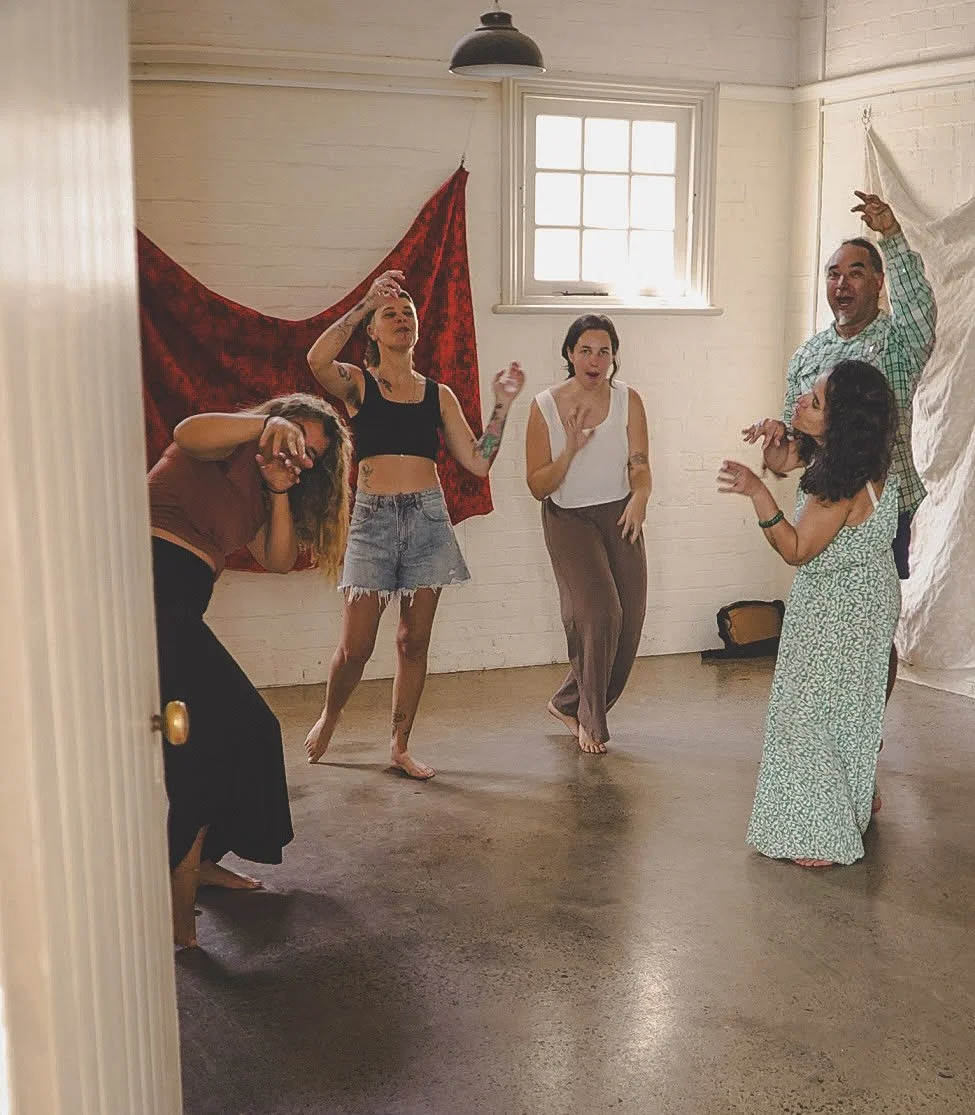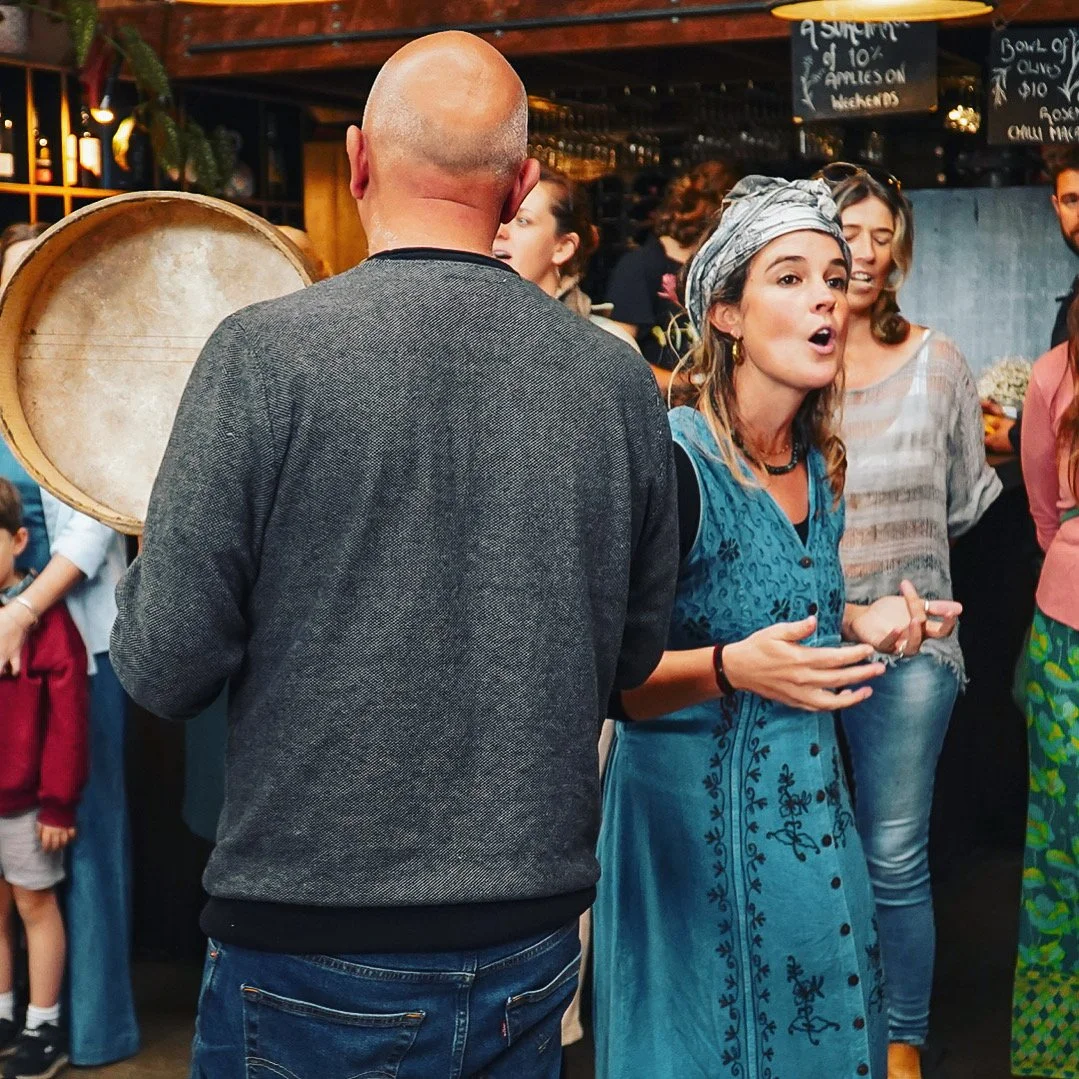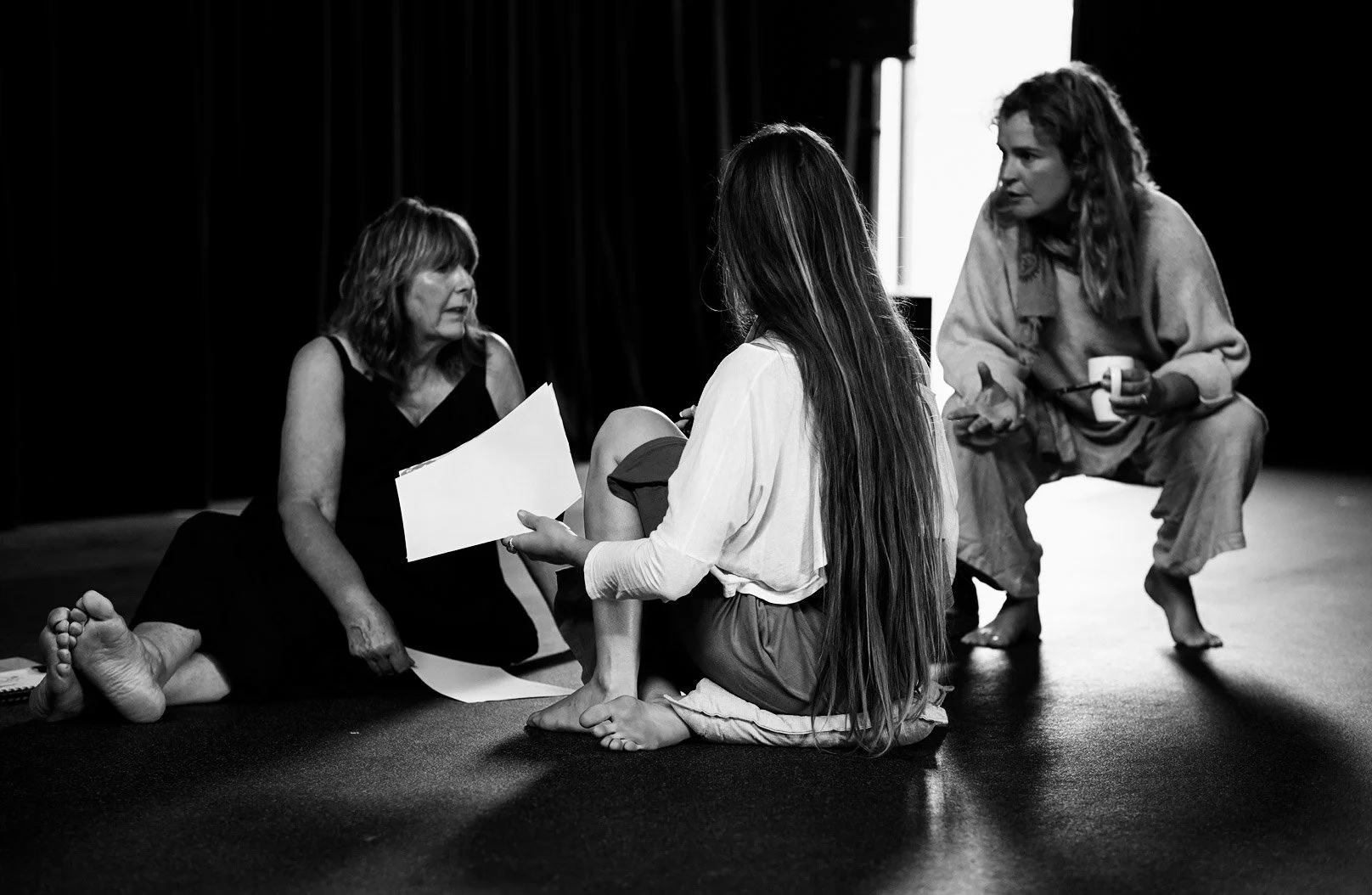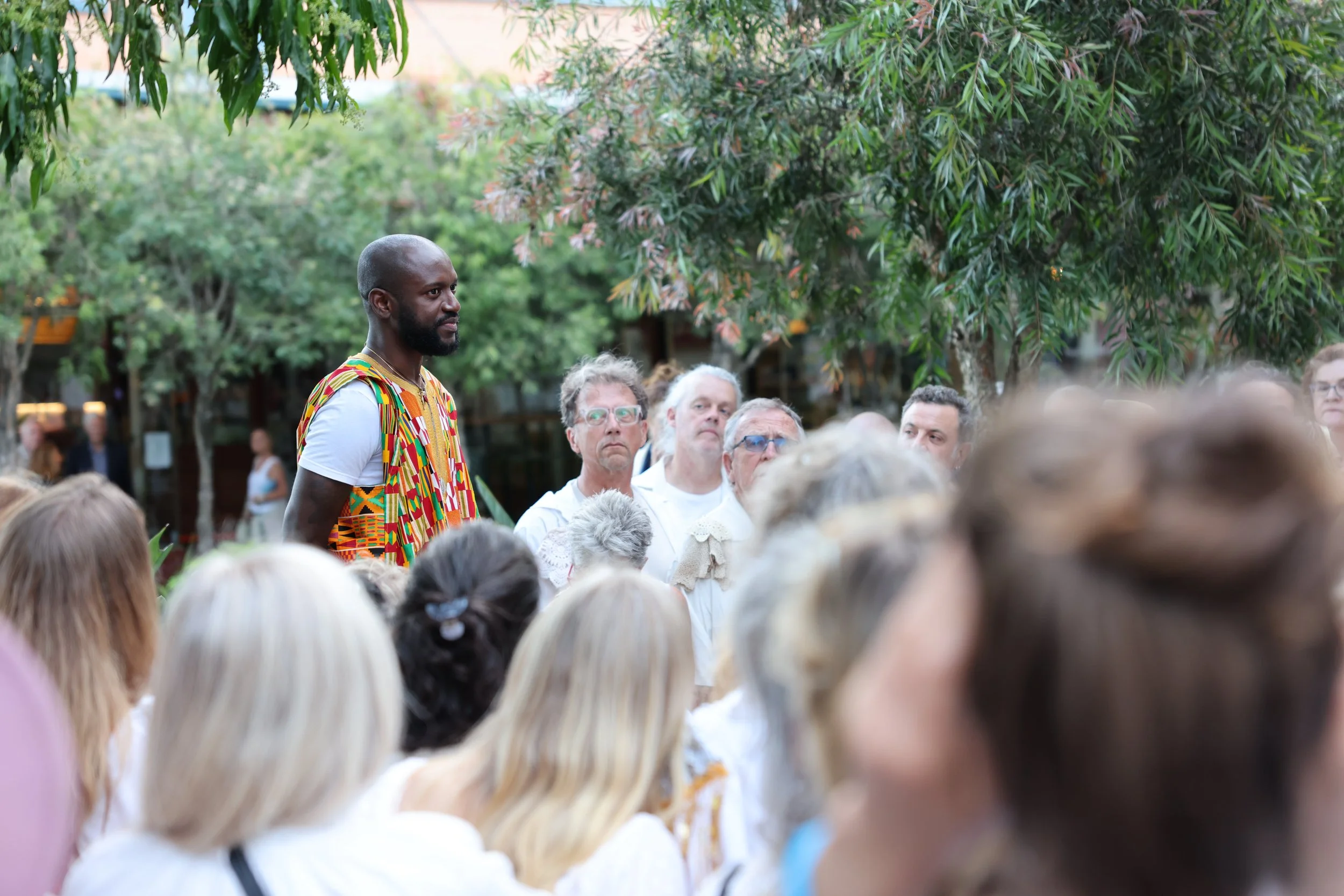About
I am a community musician and cultural worker living on Gumbaynggirr land. I create accessible spaces where people experience the transformative power of singing together and collaborative arts-making.
My practice is grounded in long-term relationship building and sustained engagement with communities. I facilitate ongoing community singing groups and site-responsive community arts projects, with participants often becoming collaborators across both areas. Weekly singing groups (The Bellingen Singers with 150+ members, Harmonia Singing Circle with 80+ members, and MotherSong for perinatal support capped at 20 places) build trust, connection, and collective capacity over time.
These sustained relationships become the foundation for more ambitious collaborative projects. Site-responsive works (The Belonging Tour, Those Before, Fire and Water) draw directly on this established trust, with choir members becoming collaborators in mask-making, storytelling, performance, and visual arts. This continuity allows for deeper engagement, more meaningful risk-taking, and stronger community outcomes.
Inclusivity and accessibility are foundational to my practice. I work with diverse participants across the lifespan: young mothers with babies, people living with dementia, young people, and elders. My approach requires no auditions, no sheet music, and no prior experience, removing barriers that often exclude people from creative participation.
I prioritize process over product, listening to what matters to communities and allowing projects to emerge from sustained conversation. My practice is trauma-informed and culturally responsive, creating safe spaces where vulnerability can be held with care.
I work on Gumbaynggirr land with deep respect for Country, its First Peoples, and their continuing connection to place. Understanding and following cultural protocols is fundamental to my practice. I have over 20 years of professional music experience, with training in linguistics, languages, creative arts, and as a doula.
I bring expertise in group singing facilitation, community arts project development, site-specific performance creation, cross-cultural community building, and collaborative project design.
When we sing together and make art together, we practice the embodied skills of listening, blending, and responding collectively. In a fragmented world, this work offers proof that we can create beauty across difference and build the foundations of both individual wellbeing and community resilience.














